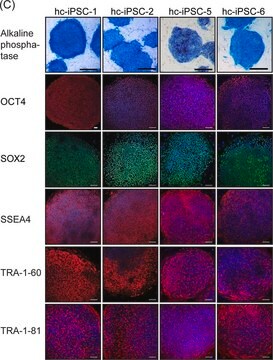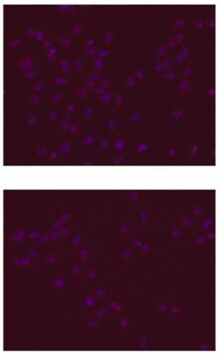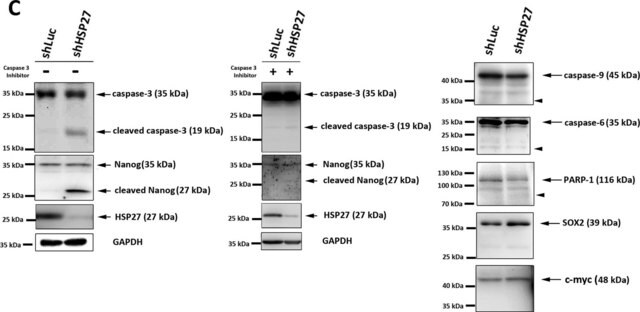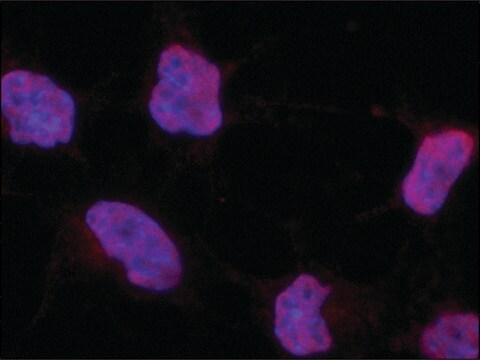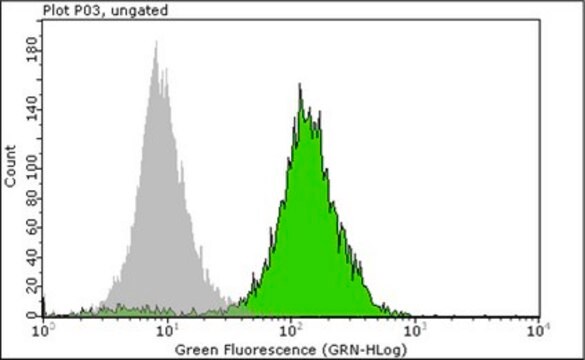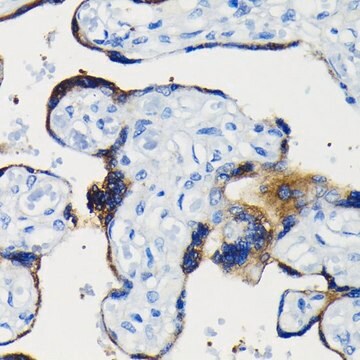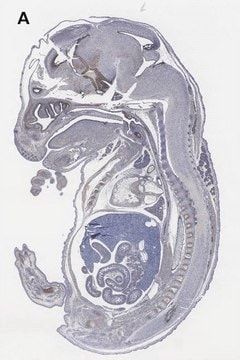AB5731
Anti-Nanog Antibody, NT
Chemicon®, from rabbit
Sinónimos:
Homeobox transcription factor Nanog, Nanog homeobox
About This Item
Productos recomendados
biological source
rabbit
Quality Level
antibody form
affinity purified immunoglobulin
antibody product type
primary antibodies
clone
polyclonal
purified by
affinity chromatography
species reactivity
human, rat, mouse
packaging
antibody small pack of 25 μg
manufacturer/tradename
Chemicon®
technique(s)
western blot: suitable
input
sample type: mouse embryonic stem cell(s)
sample type induced pluripotent stem cell(s)
sample type: human embryonic stem cell(s)
isotype
IgG
NCBI accession no.
UniProt accession no.
shipped in
ambient
storage temp.
2-8°C
target post-translational modification
unmodified
Gene Information
human ... NANOG(79923)
mouse ... Nanog(71950)
General description
NANOG may be useful in the immunohistochemical diagnosis of tumors. NANOG is expressed in germ cells of the fetus and in some germ cell tumors of the gonads and central nervous system (CNS).
Specificity
Immunogen
Application
Stem Cell Research
Pluripotent & Early Differentiation
0.5-1.0 µg/mL. The antibody recognizes a protein of ~35 kDa on NT2/D1 cell lysate. Additional bands of ~55 and ~130 kDa may be seen depending on sample and antibody dilution used.Optimal working dilutions must be determined by the end user.
Quality
Western Blot Analysis:
1:500 dilution of this lot detected NANOG on 10 μg of Embryonic Mouse Brain lysates
Target description
Physical form
Storage and Stability
Analysis Note
Whole cell lysate from mouse embryonic stem cells.
Other Notes
Legal Information
Disclaimer
¿No encuentra el producto adecuado?
Pruebe nuestro Herramienta de selección de productos.
Optional
Certificados de análisis (COA)
Busque Certificados de análisis (COA) introduciendo el número de lote del producto. Los números de lote se encuentran en la etiqueta del producto después de las palabras «Lot» o «Batch»
¿Ya tiene este producto?
Encuentre la documentación para los productos que ha comprado recientemente en la Biblioteca de documentos.
Nuestro equipo de científicos tiene experiencia en todas las áreas de investigación: Ciencias de la vida, Ciencia de los materiales, Síntesis química, Cromatografía, Analítica y muchas otras.
Póngase en contacto con el Servicio técnico